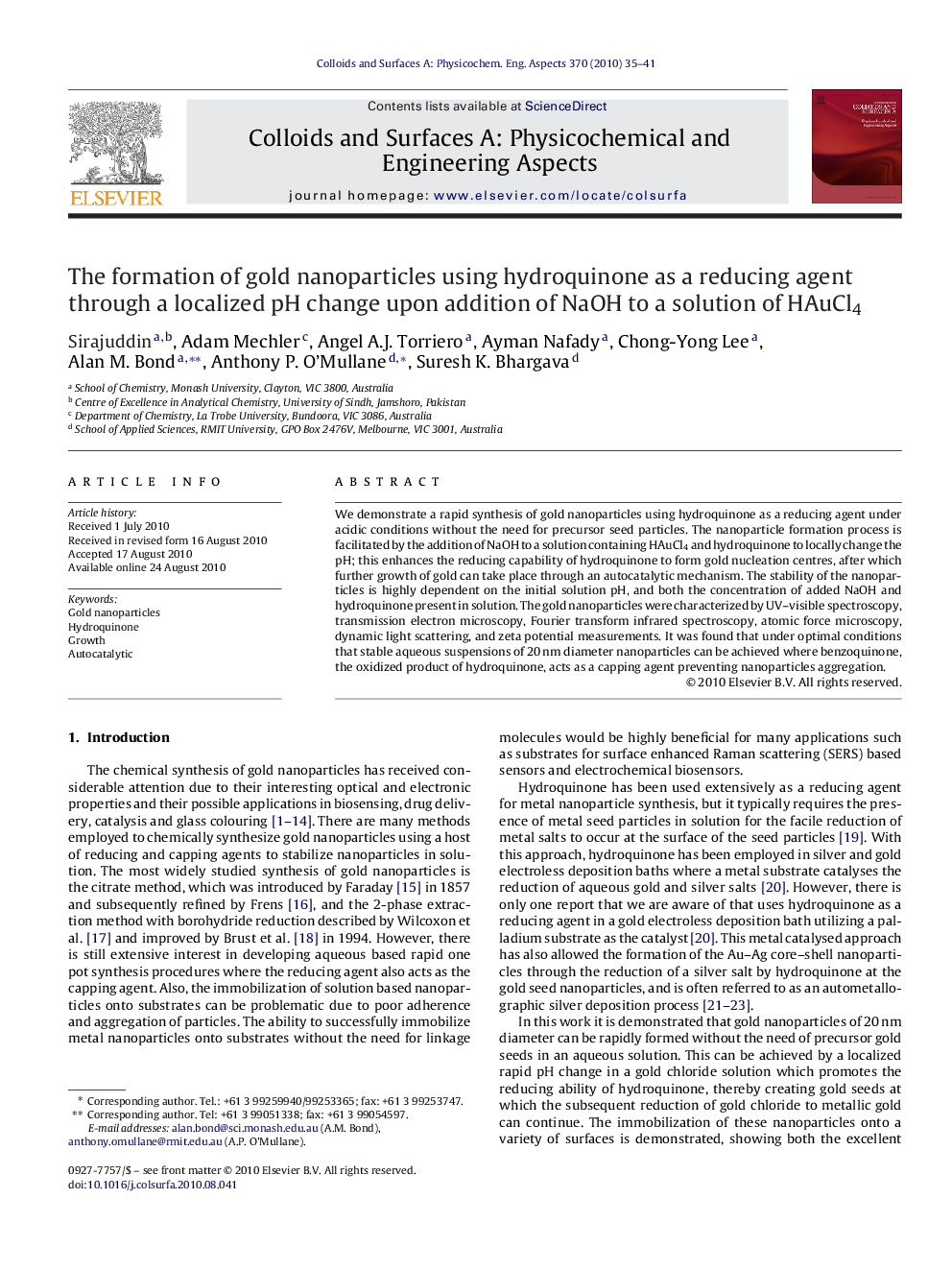| Article ID | Journal | Published Year | Pages | File Type |
|---|---|---|---|---|
| 595128 | Colloids and Surfaces A: Physicochemical and Engineering Aspects | 2010 | 7 Pages |
We demonstrate a rapid synthesis of gold nanoparticles using hydroquinone as a reducing agent under acidic conditions without the need for precursor seed particles. The nanoparticle formation process is facilitated by the addition of NaOH to a solution containing HAuCl4 and hydroquinone to locally change the pH; this enhances the reducing capability of hydroquinone to form gold nucleation centres, after which further growth of gold can take place through an autocatalytic mechanism. The stability of the nanoparticles is highly dependent on the initial solution pH, and both the concentration of added NaOH and hydroquinone present in solution. The gold nanoparticles were characterized by UV–visible spectroscopy, transmission electron microscopy, Fourier transform infrared spectroscopy, atomic force microscopy, dynamic light scattering, and zeta potential measurements. It was found that under optimal conditions that stable aqueous suspensions of 20 nm diameter nanoparticles can be achieved where benzoquinone, the oxidized product of hydroquinone, acts as a capping agent preventing nanoparticles aggregation.
